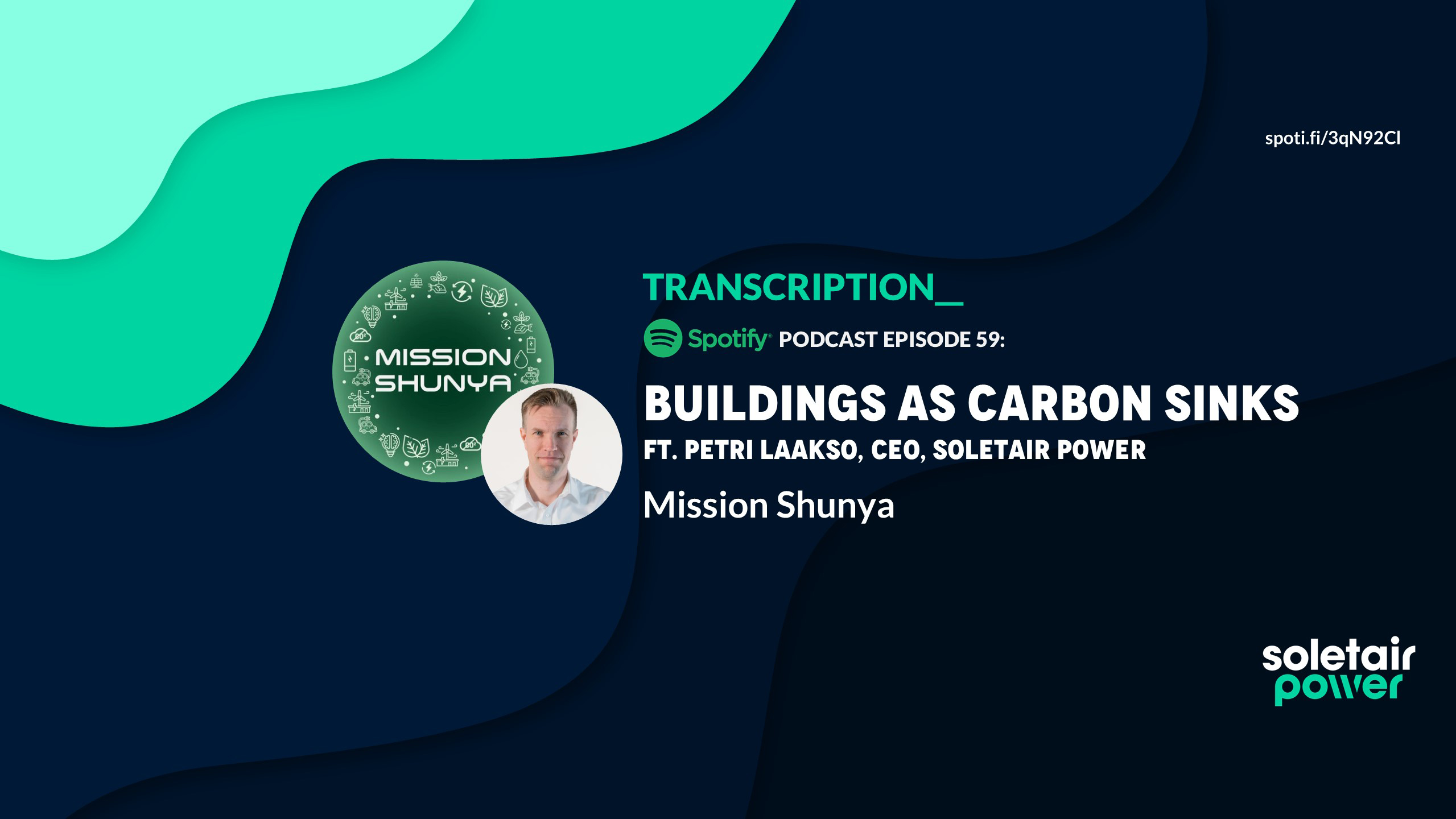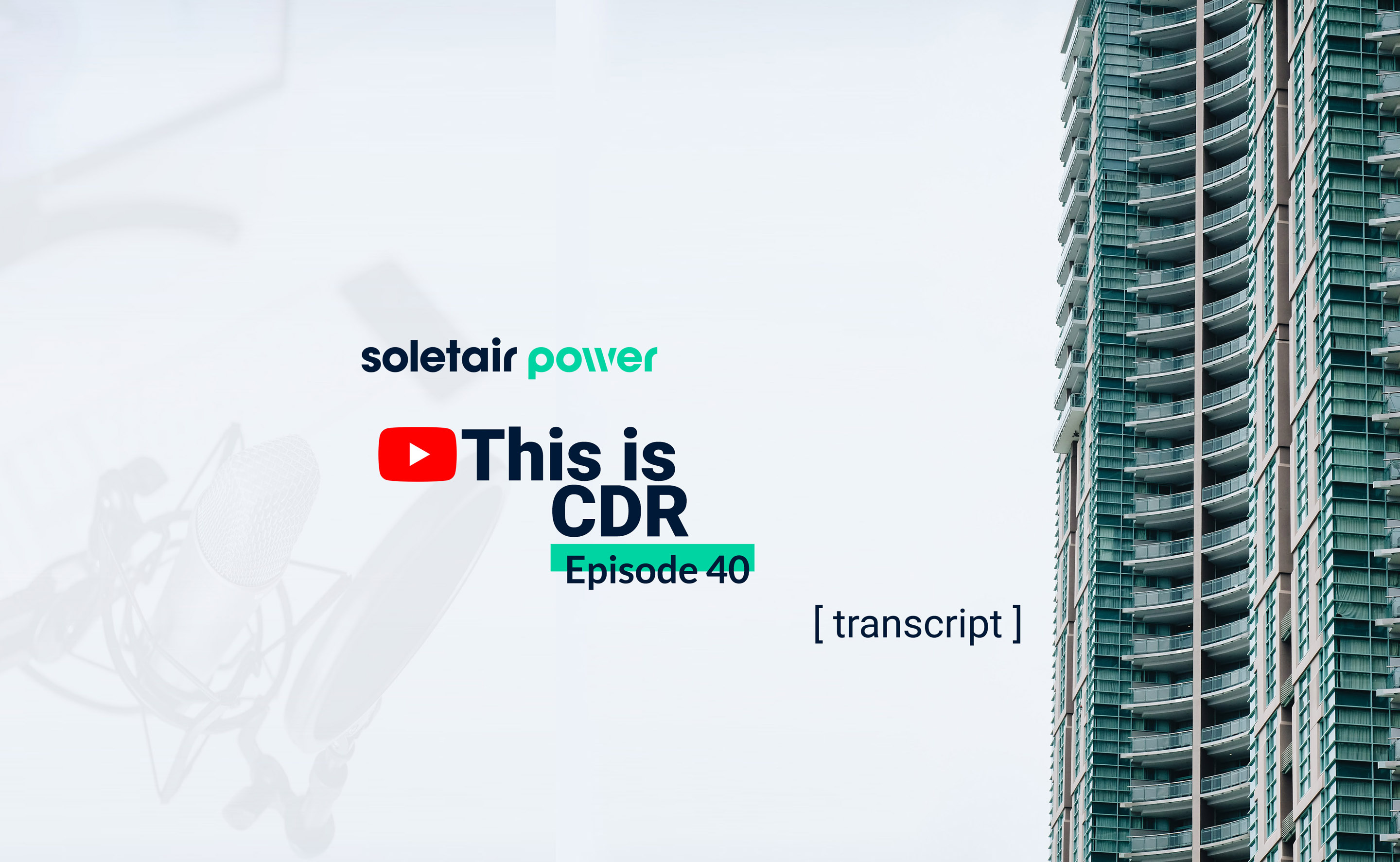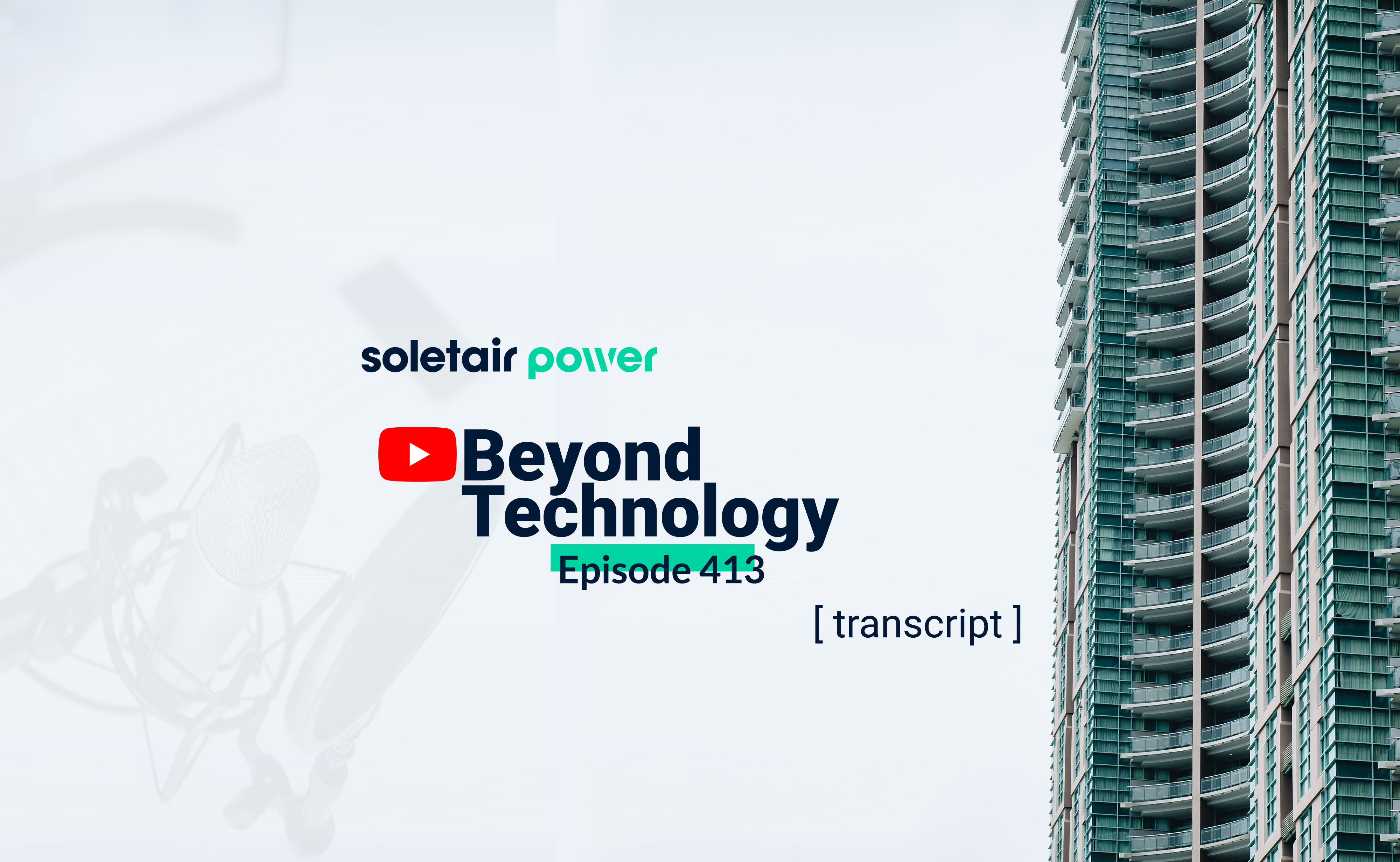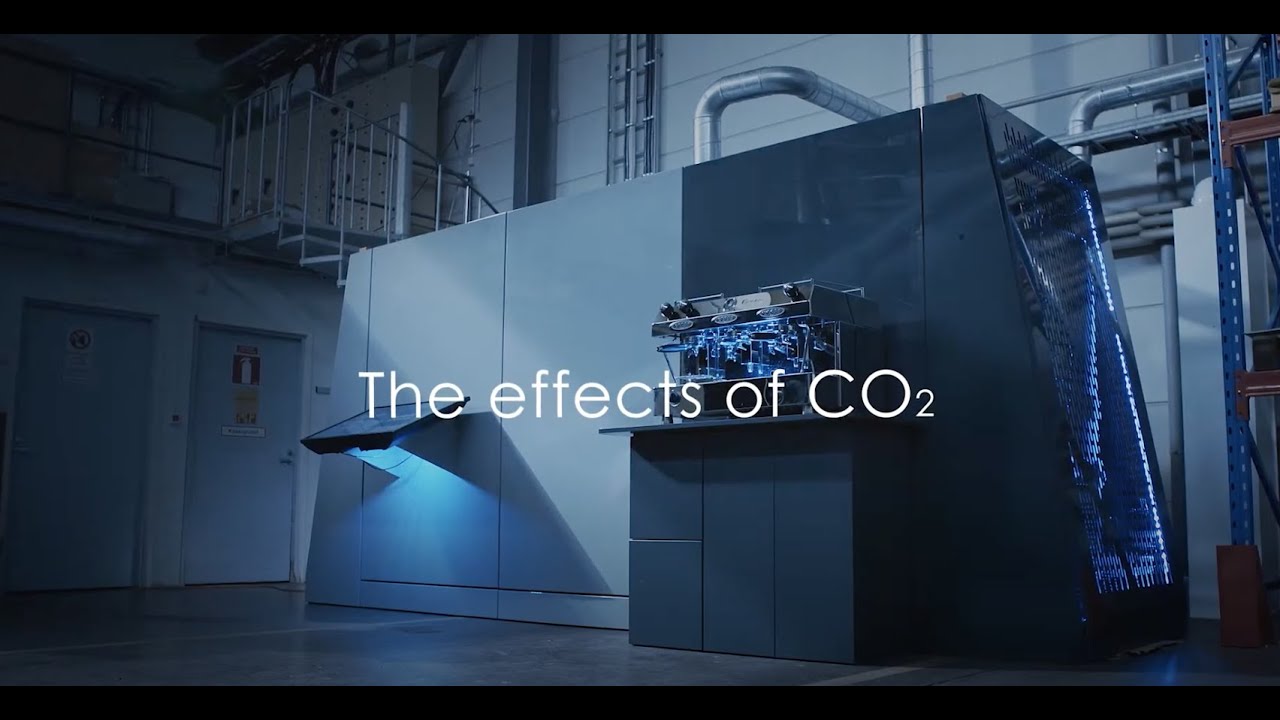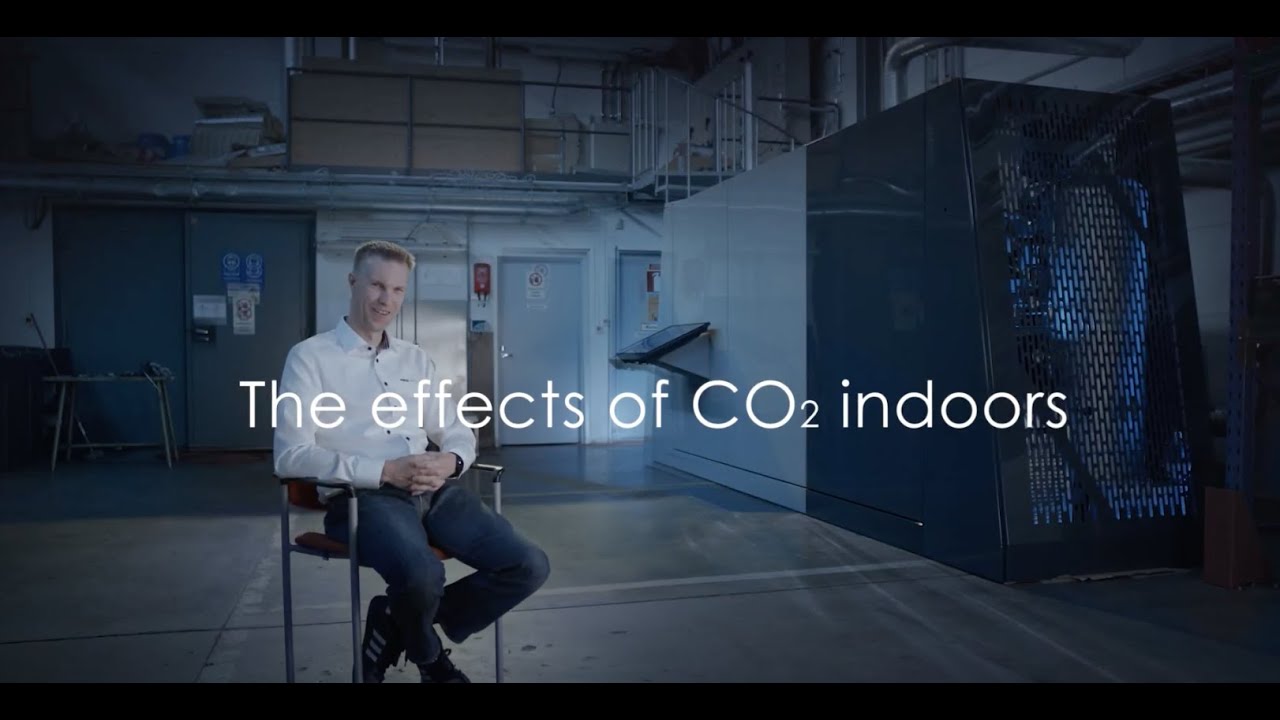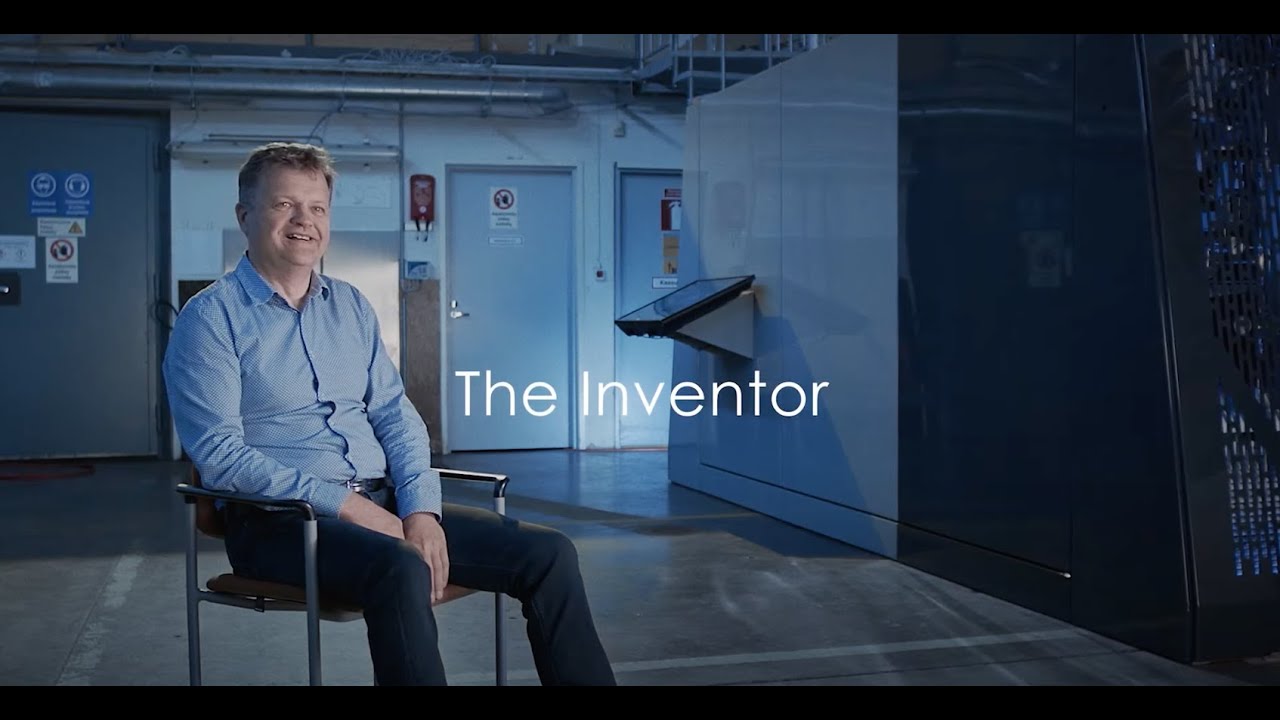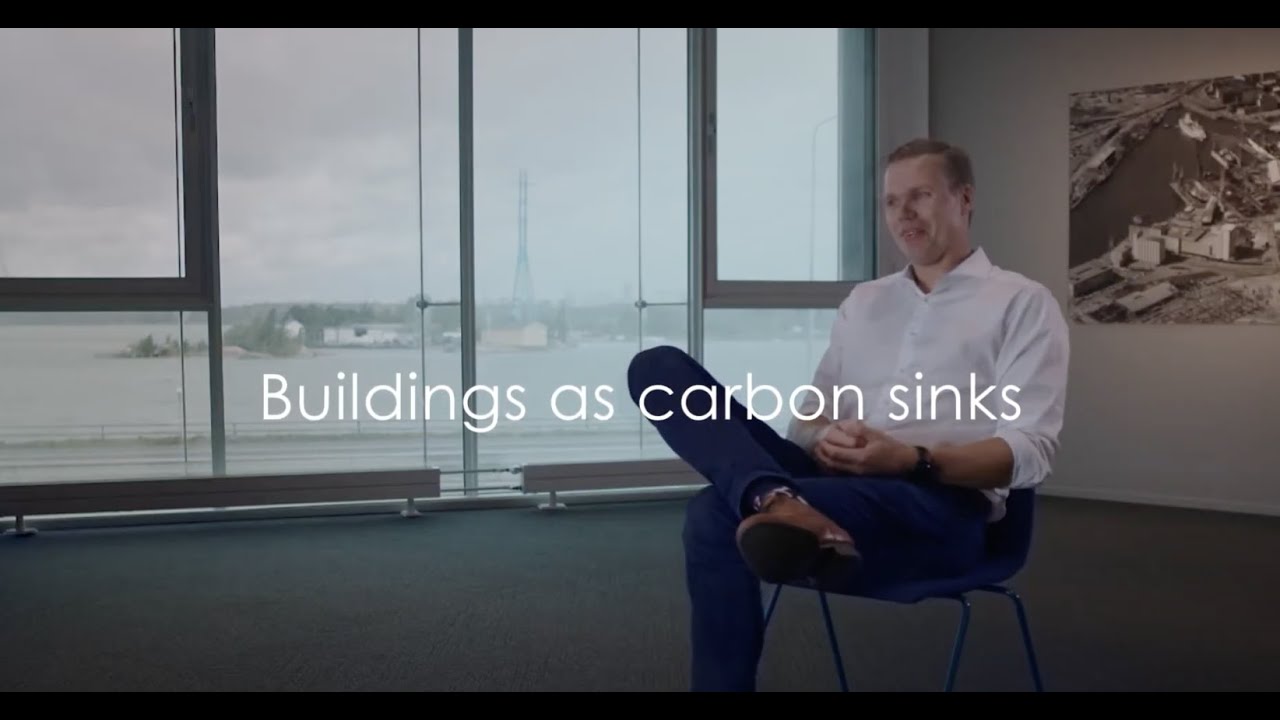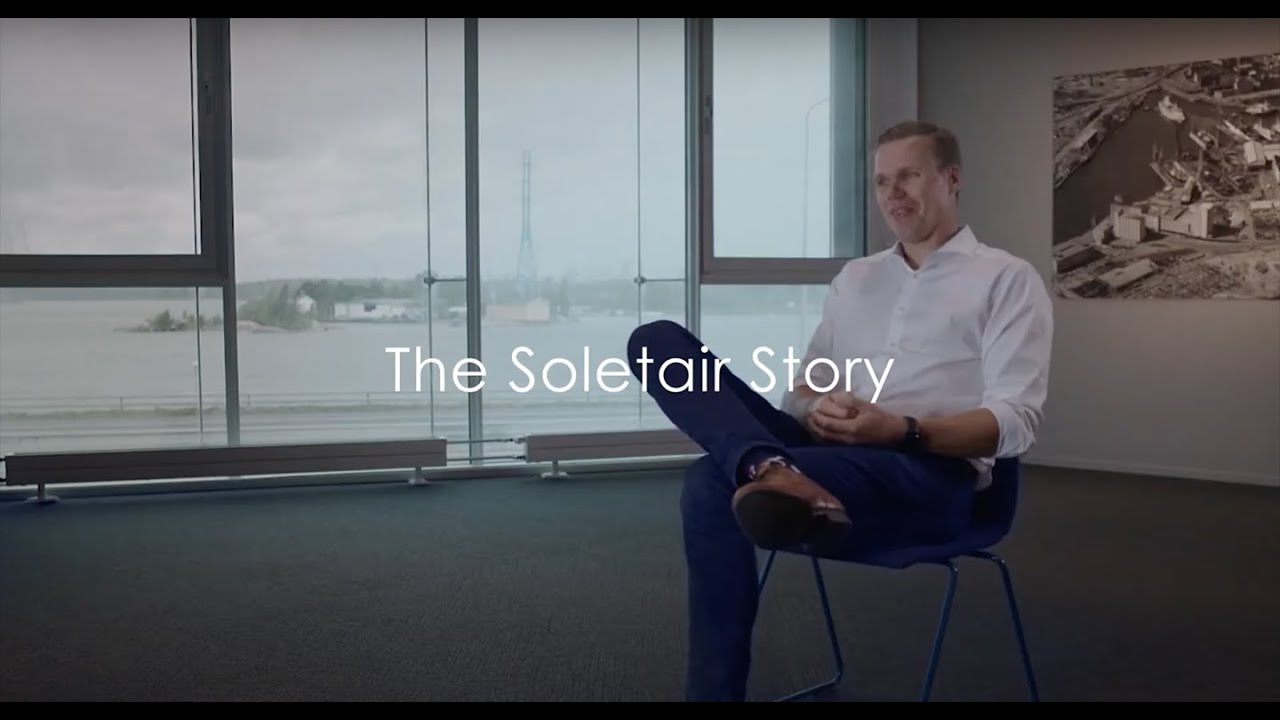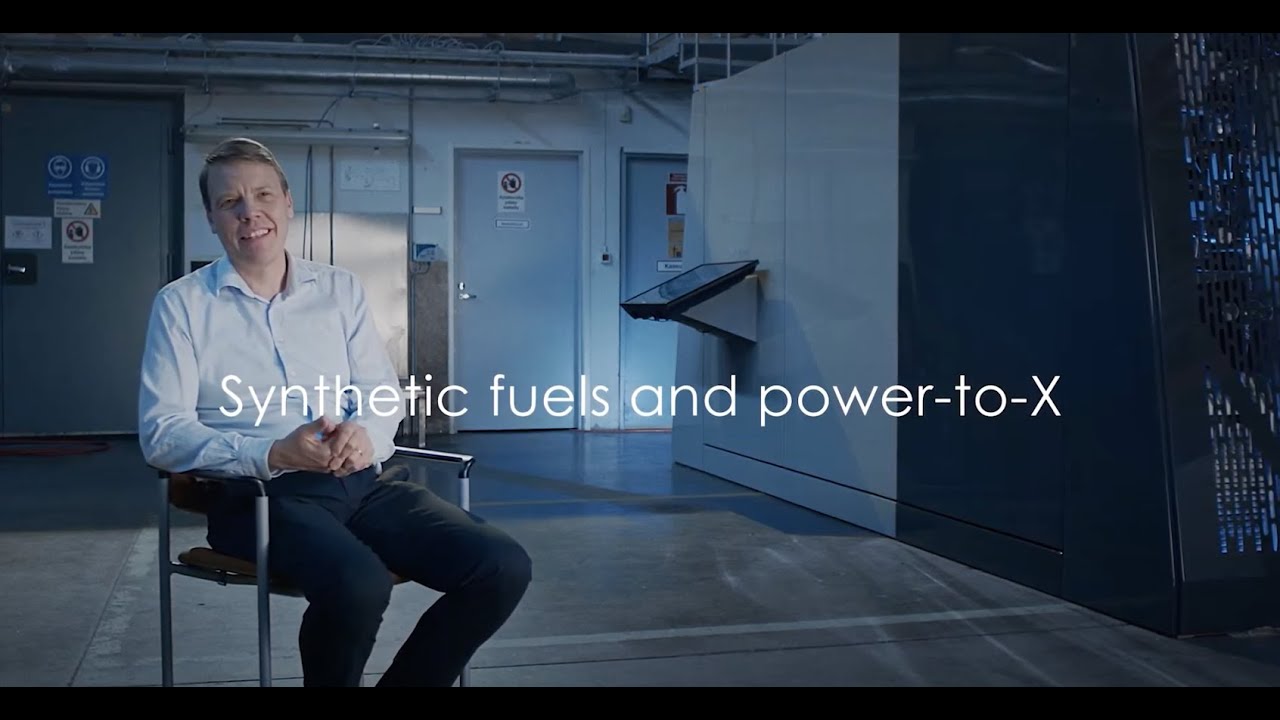Soletair Power — Carbon capture technology company in Finland
Our technology captures CO₂ from the air in buildings and enhances global wellbeing. Soletair Power’s technology is behind the world’s first economically profitable P2X fuel production, produced from CO₂ captured directly from the air. Our compact, sleek and modular-designed air-capture products efficiently captures CO₂ from the indoor air by turning buildings into carbon sinks. Reduced carbon dioxide indoors increases human cognitive functions.
Soletair Power Oy, the direct air capture company from Finland, has already been featured in CNBC’s Sustainable Energy Show, BBC, ARS Technica, termed as the Carbon ghostbusters by Sifted, mentioned in Helsingin Sanomat, YLE and got funded multiple times by Wärtsilä for representing an important step towards a carbon-neutral future.
[ This is the transcript of episode 59 of the podcast series Mission Shunya. The episode was first aired on July 4, 2021, on Spotify Petri Laakso, CEO, Soletair Power, joins Girish Shivakumar in this episode ]
[ Listen on Spotify: spoti.fi/3qN92Cl ]
Podcast Transcript:
We don’t sell that CO₂, we sell the best indoor air for companies. It will be a profitable business even today. Of course, when the technology develops, just the pure CO₂ capture will be profitable, that’s for sure. But at this point, this is the way to do it profitably today, without any subsidies.
That was right from the middle of this week’s episode. So, what is the technology that we are talking about? And how can buildings act as carbon sinks? A lot more on that is right after this. Stay tuned.
Hello, and a warm welcome to a brand-new episode of the Mission Shunya podcast. First things first, hope you are doing well. Glad to have you tune in to the podcast yet again. In case this happens to be the first time you are listening to this podcast, a special welcome to you. The podcast channel will feature all stories around sustainability and from the global transition to a net-zero carbon economy. And this episode is no different. So, how do you develop and commercialize a new technology in the cleantech space, especially if the solution goes right to the center of decarbonization i.e., capturing carbon from the atmosphere? Well, the company that is being featured today has managed to do just that.
So, who is the guest for today, and what is the company specializing in?
Hi. My name is Petri Laakso. I am the CEO of Soletair Power, and we make buildings as carbon sinks.
So, let us begin the conversation by looking at the origins of Soletair Power, so where did it all begin for the company?
Yeah, it’s a nice story. It was back in 2016: our founder, Mr. Ari Piispanen saw in the local newspaper that local university professors were in Germany to see how the CO₂ was captured from flue gases in a factory. And he called the professors that, “Hey, why are you capturing the CO₂ from the flue gas, because you could do it directly from the air,” and the professor said that, “Well, there’s not really a competitively priced equipment for that,” and Mr. Piispanen said that, “Well, what if I could deliver it to you,” and that’s what he did and in 2017, we had two pilots.
But then with another co-founder Dr. Pasi Vainikka, they found out that the capture cost is some hundreds of euros per ton, and the sales price is tens of euros per ton. It’s not yet kind of profitable, but Mr. Piispanen had another company doing the indoor air purifiers, and then he kind of combined these two ideas that what if we would capture that CO₂ from building ventilation, and then we could make the peoples’ performance benefit in the buildings, because the CO₂ is lowering our cognitive function, meaning that we are not as wise as we could be. And what if we would sell this as a service like one to two dollars per day per person and then they calculated that, “Yeah, this would be a profitable business for us and for our customers,” and that was kind of the starting point.
Wonderful, that was a nice, little, short story about the origins because I was going to ask you about how did Soletair Power get into direct air capture. Because I understand from a limited knowledge that direct air capture is a complex technology, how did you get into that complex technology?
Yeah, these professors were running a project – I don’t know when it really started, cannot kind of recall it – but Pasi Vainikka was running the VTT, which is the technical research center, Finland side, of that project. And they were doing research on that side, how to make renewable fuels directly from the air. And Mr. Piispanen knew the technology – how to capture CO₂ directly from the air. So, that was kind of that, there was the need at the university and technical research center of Finland, to get such a device at an affordable price. And Ari knew how to get access to that technology, and how to deliver a unit. So that was kind of it, that it was an existing kind of thing, which was applied in a different manner.
It is interesting to know the timelines that you’re mentioning 2016, 2017, in Finland, that is interesting to know from the perspective that the significance of carbon capture was felt even at that point in time. So how have you seen that significance of carbon capture change over this last few years, three/four years period? How important is carbon capture technology in that part of the world?
Yeah, I think it’s getting more and more important. If you look at our competitors, they have been on the market for more than 10 years already, developing the technology. And when I started in this company, in 2019, April, I went to talk to the national funding agency, and they didn’t laugh us out, but they said that “Hey guys this is probably not something that you should do”. But, one year after, 2020, everybody started saying that “Hey guys, you are doing great work, keep on doing that.” And it was the summer of 2018 actually, that, Wärtsilä contacted us already, and they’ve seen the potential of CO₂ capture. And they see renewable fuels in the future being a vital part of the whole ecosystem and the energy transition. So, over the years, it has developed a lot. So, I guess the guys when they have started early – 2010s – to speak about this, people have probably laughed at them. But I really think that by 2030, this will be a serious business. At least, we think that we are going to be a billion-dollar business by that time already.
Wärtsilä backing you – is a really big statement to the technology, and I’m sure that is a definite value of getting backing from such a big corporation. Now, you did mention this short story of how you started the technology, but you found the entire value proposition to come from using this technology in a building-environment. So, where did that idea of looking at buildings as carbon sinks come about?
Yeah, the other co-founder Mr. Ari Piispanen had another company, doing indoor air purifiers and – at least he has told me that – he was once in a hotel room and he didn’t have anything to do and he was thinking that, how could I make the world a better place, and, he kind of combined these two ideas that the CO₂ capture, and the kind of the good air in the offices. Then, kind of CO₂ capture cost nowadays with our technology even, it’s like some hundreds of euros per ton, and the sales price is some tens of euros per ton. We don’t sell that CO₂, we sell the best indoor air for companies. It will be a profitable business even today, of course, when the technology develops, just the pure CO₂ capture will be profitable, that’s for sure. But at this point, this is the way to do it profitable today, without any subsidies.
I’m sure India will be a great market if you were to bring about a technology and say like we are just going to purify the air for you rather than looking at carbon capture as the entire technology. That’s a nice business model that you have, where you’re saying okay purified air is an outcome of this. So, what are the other USPs of the technology that you have?
Then when we do that CO₂ capture you should utilize it in something useful, because if you just vent out the CO₂ from the building, it’s not contributing to stopping the climate change. And actually, the CO₂ amount that we capture can be up to 50 percent of the building’s CO₂ emissions during its operational lifetime. So, actually, we can help building-owners to achieve the net-zero and even carbon negative and we say that we can make buildings as carbon sinks. So, that’s also one really good bonus. And companies are looking to be greener. So, this aligns really well with the companies. Then there’s the people performance – I think everybody has felt it sometimes, previously, in a stuffy meeting room, that you cannot really think straight, or you should maybe open the window or something to make the air better, (yeah) but we can change that. And if you have a really productive meeting, your peoples’ wellbeing will be enhanced, even after working hours. So, that will generate a lot of money for the companies. And I saw one Harvard Business Review article that, “What is the single most important thing for employees in the office spaces?” – it was of course in the U.S. but still – the clean air in the offices, was one of the top things that people want at their workplaces. So, we are also aligning on that really well.
Intangible benefits like that are really hard to put a number to, especially a monetary number, but I’m sure, coming from your part of the world, happiness is a major factor, being on top of the happiness index is something that you really value. So, I really appreciate that. Now, how modular is it, the technology, to implement? You said it’s easy to put in office spaces, but I believe you offer a range of products, that are small, that are also in containers. So, how do you scale up the technology?
Yeah, let’s say, it’s not very expensive by the way, I’ll have to come back on the previous thing. If we sell this as a service, it’s an equal cost to coffee-benefit which is typically all over available for the employees. And, if you ask that why are the companies buying the coffee to employees? Is there a payback on that one? Maybe people go to the toilet more often, or they have a stomachache because they drink so much coffee, but we have a really scientific background, backing the story that, low CO₂ environment will make people perform better.
That is good to know about the enhanced-people-performance but now back to my question on the modularity of the solution, how big – and how big can it get?
Yeah, typically in the office buildings, the ventilation units are pretty much let’s say same sizes, but in different buildings, you have different size ventilation units. I’ll give you one example, there’s like one cubic meter of air per second going through the unit, or it could be up to 10 cubic meters per second. So, we can make a small module – which is one cubic meter per second. In Finland, it’s like 800 to 600 square meters of floor space, typically that kind of ventilation unit. So, we can really add modules so that you can make a big one a smaller one. Then, we are launching a new product next month, which is a single-room system, so that we bring the unit into the room. The normal system is going to be installed next to the ventilation unit in the HVAC room of the building. But this unit will be a single, like a meeting room kind of thing. It operates in the meeting room, where there’s a high density of people, and it can capture CO₂. That unit can capture like a bit more than one kilo of CO₂ per day, or then we can do tens of or even hundreds of kilos per day with different kinds of modules. So, the perspective is quite big.
I was, in fact, going to ask you about the smallest unit that is possible. So, it gives me a picture that you can actually put a unit, it’s generally like typically how a split AC (air condition) works also, so you have modular units all around?
Yeah, the smallest unit is like an indoor air purifier, so, much-much smaller than the refrigerator at home. So, this is like 400 by 400 millimeters the floor space and a bit more than one-meter-high unit and it will ventilate the air like 50 to 100 liters per second. And it will capture the CO₂ in the meeting room for example. Or it could be like we have one at our own office – it’s been tested here. So it will really efficiently capture that CO₂, that if you have many many people in the room, it will kind of make the same effect, as the ventilation would be doubled, so it will keep the CO₂ levels low.
It’s good that you will reference the refrigerator that reminds me of like what are the maintenance issues associated with this technology? I understand, it’s an evolving technology, so, where do you see maintenance playing into the picture, is it going to be really tough to maintain like an HVAC system or how is it?
It is actually like the ventilation unit, so you need to do a couple of filter changes, depending on the place – one to two filtered changes per year, same as what the ventilation unit needs. Our sorbent: we have made accelerated tests – how long does it work, and we see that it should go five to ten years easily, and then you can just exchange the cartridges with new sorbent. But five to ten years is quite a long time already.
And then if you go to making the fuel, so that when you capture the CO₂ in pure form and you convert in the fuel, then it’s a bit different because you need to have electrolyzer unless you get hydrogen from somewhere else, and then the synthesis, depending on which synthesis you have. For example, the unit that we are now shipping to Dubai, it’s been running like one year, almost virtually no maintenance was done during that time. So, it will run quite well, and it’s like another unit in a normal building.
The Dubai project that you are mentioning – is it on a pilot-scale or have you deployed similar prototypes or similar products earlier as well?
This was specifically made for a customer. It’s going to the Dubai World Expo in the Finnish pavilion. It’s a single unit, five meters long, two meters high, one meter wide, roughly. It has the Power-to-X incorporated in one unit. In the other end of the unit, it has the CO₂ capture. In the middle, it has the controls and the electrolyzer, and in the other end, it has the synthesis. And then, we have an espresso machine, which will be fired up with that synthetic natural gas that the machine is producing. So, as long as we have electricity, we can make synthetic natural gas. So, it’s not an actual product, it’s a customer-specific demonstrational unit, with the Power-to-X in a single enclosure. So, it’s not really a product, but we could make it much-much larger scale, like in buildings, it would be like 30 times bigger this is specified so that it will have a one-kilowatt flame burning 24/7. So that was the setting point from the customer.
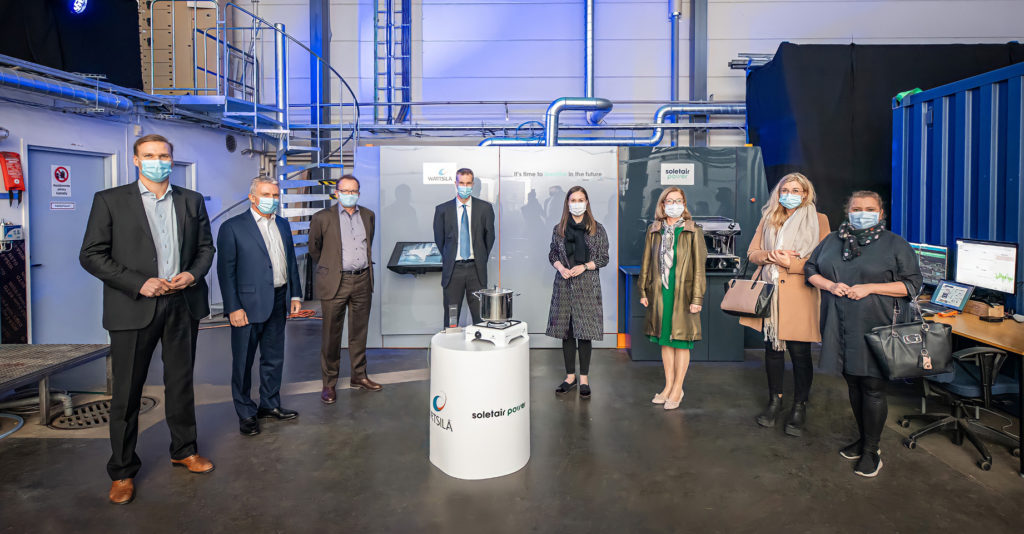
Talking of customized solutions, do you also see the by-product being driven for mobility applications?
Yeah, we shared a vision with Wärtsilä that in the future you will still need hydrocarbons to fire up their planes and ships, of course, there’s ammonia also coming, and why not hydrogen, but still the hydrocarbons are needed. And maybe the passenger cars are electrified quite soon, but there are certain applications in which the hydrocarbons are needed and currently our economy is run by the utilization of crude oil, and we should stop utilizing the crude oil and substitute it with synthetic ones so that we could utilize the same infrastructure. And in the future, there will be an abundance of renewable electricity, and you should know what you do when there’s an excess of that, and then you can run the electrolyzers and direct air capture units to make those fuels that you would anyhow need, and with the zero-emission. So, this is how we see the future.
That is nice. So, this future that you’re talking about where you’re getting to a low carbon emissions source or rather for example the power consumption of the device now would be X. So what is the trajectory that you see where the power consumption could go down?
Yeah, if we speak about that Power-to-X, it’s like 30 percent. But most of the electricity is of course utilized in the electrolyzer, that’s the biggest energy consumption, there. And when the electrolyzers are getting better, I think that will be setting the efficiency higher. Of course, the DAC needs a lot of energy itself also, but nothing compared to the electrolyzer itself when you are making hydrocarbons.
That is good to know. Now, we’ll have to talk about the cost factor. Now that we know about the efficiency factor and other things. So, what is the trajectory looking for the cost factors of such projects? You did mention early on that it cost a few thousand, but the returns are in hundreds. So, where do you see the parity going forward in the next few years?
Yeah, since our target currently is in the building applications, and we can be profitable already today, all the money that we can save on the installation cost on our side is going to our pockets basically. But we are just speaking about the CO₂ capture directly from the air which we are also doing, we are announcing a couple of sales quite soon. I think that it will take some years, if you look at the scenarios from researchers it will take maybe tens of years to really reach low prices. For example, the carbon credit is getting higher depending wherever in the world you are. It might be that the DAC lowest cost is around a hundred dollars or euros per ton currently. We are not yet there but we are let’s say some hundreds of euros per ton on our technology. Our systems are quite small compared to the other ones. So, we would also gain an advantage if we would do bigger units but in buildings, you cannot do a really building-sized unit because you cannot fit into a building, and our target is not to do that. But of course, we also want to do the outdoor capture like a containerized solution that you bring one or ten containers, and they capture the CO₂ directly from the air. So I think it will take some time to really get to below 100 euros per ton pricing on that.
You did mention the cost trajectory and also the other good announcements that are going to come up in the next few weeks. On the other note, Wärtsilä is a major partner, do you see any other partners coming along from the financial side or investment side in the projects anytime soon?
Yes, of course. Those are the commercial things that we are going to announce. Those of course make the company much more lucrative to the investors and we are looking for series A round in the upcoming 12 months. Our board has not yet made the decision, but it will be a substantial A-Round and it seems that there’s a lot of investors out there willing to invest in this technology. If you look at our competitors, they have gathered more than 100 million already, so I think we are in a good position in the future.
That’s really true. Companies in this space are really getting the investments in big numbers actually, bringing astronomical numbers if I were to put it that way. Petri, on a final note, if I were to ask you so if you had to sell this idea to someone like an investor or someone what would you say in terms of technology cost and everything, where would you put Soletair Power in the next few years, three to five years down the line?
Yeah, our vision: in 2025, we have a 500-million-euro turnover, half of that is coming basically from the building applications and the other half is coming from direct air capture outdoors. And then we have also those indoor air units, they will commit some share like 10 percent but since they are really low-cost systems you need to sell thousands of them and still the turnover is not that that big with those, but there are three legs with this company that we will make the business happen. But that requires quite substantial growth for the company, and that is what we are aiming for, and that is why we need that A-Round within the next 12 months.
Wonderful. Petri, it’s been an insightful conversation especially talking to someone who comes with the technology of direct air capture. So, thanks very much for coming on the show and sharing the story of Soletair Power. It’s been an insightful conversation.
Yeah, it’s been a pleasure. Thank you.
That was a wrap on the conversation with Petri. Hope you found it interesting. One of the key takeaways for me from the conversation was how Soletair Power has positioned itself, especially, by providing clean air in buildings. While looking at some intangible benefits like improving people’s mood, providing them with clean air for increasing productivity, and well-being. Of course, positioning itself as a service provider makes it commercially viable. But in due course, as more research and development happens, the solution will be more commercially viable, and also an attractive value proposition. But that shouldn’t stop us from giving this a try right now.
So, in case you are developing a new infrastructure project and if you would like to try this solution in a commercial building, do get in touch with Petri and Soletair Power. Their solutions are available globally, and as you heard earlier in the conversation, they ship anywhere.
The links to connect will be there in the show notes section of the podcast and also on the website missionshunya.com. And finally, like always, do join me in helping spread the message to a wider audience. The simplest way to do that is to share the podcast link with at least three people in your network. It should just take about 30 seconds. Or there is another way you can help me, which is to write a review on Apple Podcast or any platform that you use. It definitely helps in the show’s global visibility. So, with that, I will be back in two weeks’ time. Signing off this is Girish Shivakumar and as always, thank you for listening.
[ This was the transcription of episode 59: Buildings as carbon sinks ft. Petri Laakso on Podcast series Mission Shunya, where Petri Laakso, CEO, Soletair Power, joins Girish Shivakumar. The episode was first aired on July 4, 2021, on Spotify ]

